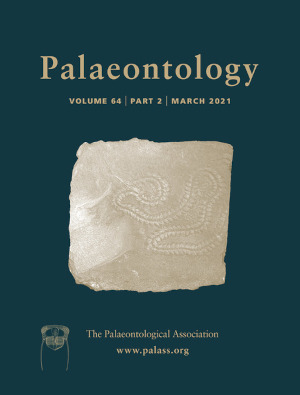Reg. Charity No. 1168330

Acrotretides are extinct micromorphic brachiopods that exhibited considerable morphological variation during their rapid evolution in the early Palaeozoic. The plano-conical shells of acrotretides are distinct in comparison to other brachiopod groups and despite their diversity and abundance in early Palaeozoic communities, their origins, early evolution, life history and phylogeny are poorly understood. Here, we employ advanced geometric morphometrics to quantitatively investigate ontogenetic variation and allometry in the ventral valve of the oldest known acrotretide species from the early Cambrian of South China. Our results identify substantial shape variation for Eohadrotreta zhenbaensis, along with a parabolic morphological trajectory through ontogeny, demonstrating a remarkable reversal to PC1 values equivalent to those obtained for juveniles, during later ontogenetic stages. The evolutionary novel body plan (diminutive and plano-conical) of Acrotretida was established gradually during two phases of allometry, formed initially during the final stage of the Cambrian evolutionary radiation from an ancestral low, equivalved lingulide body plan. The development of a conical shaped valve seems to have resulted in an overall smaller body size, when compared with non-conical forms. The heterochronic processes responsible for generating these ontogenetic modifications at different allometric phases may have facilitated the evolutionary diversification of acrotretide brachiopods during the early Palaeozoic.
AcknowledgementsWe would like to thank J. Alroy and M. Kosnik for helpful discussion and Q.C. Feng for sample preparation in Xi’an. Thanks to M. Streng at Uppsala University, Y.L. Pang at Northwest University, and S. Lindsay and Chao Shen at the Microscopy Unit of Macquarie University for assistance with SEM imaging. Financial support for this project was provided by National Natural Science Foundation of China (41425008, 41720104002, 41621003, 41890844, 41772002, 41672009), Macquarie University Research Fellowship (2019 MQRF), Swedish Research Council (VR 2018-03390), China Scholarship Council (CSC 201806970026), Strategic Priority Research Program of Chinese Academy of Sciences (XDB26000000), Ministry of Science and 111 project of Ministry of Education of China (D17013), Thousand Talents Program and 1000 Talent Shaanxi Province Fellowship. Thanks also go to editors Javier Álvaro, Sally Thomas and three anonymous reviewers for constructive comments, which have greatly improved the manuscript.
ZLZ, ZFZ and GAB conceived the project. ZFZ, FYC and ZLZ collected the fossils. YLC, LCS and ZLZ analysed the data, ZLZ and TPT wrote the paper with input from the other authors. All authors read and approved the final manuscript.